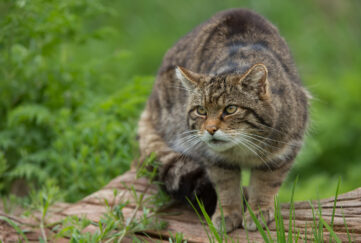Five Fascinating Facts – Red Squirrels

Discover some interesting facts about Scotland’s native, fiery red squirrels – they need our help!
Over the past year, red squirrels have been are turning up in unusual urban areas of Scotland, such as Glasgow and Bishopbriggs.
The red squirrel is the Scotland’s only native species, which was once widespread across the country. However, populations have been in decline for decades following the introduction of grey squirrels.
Saving Scotland’s Red Squirrels (SSRS) is asking anyone who spots a red squirrel, or grey, in the wild to report their sighting to the 2024 Great Scottish Squirrel Survey.
- Red squirrels (Sciurus vulgaris) are native to Scotland and were once the only squirrel species found in the country. They have inhabited the Scottish woodlands for thousands of years. Only 140,000 red squirrels remain in the UK – more than 75% of which reside in Scotland.
- They are arboreal animals, which means they spend most of their lives in trees. They are agile climbers and use their strong hind legs and sharp claws to navigate through the treetops.
- Red squirrels in Scotland have faced a significant population decline over the years due to competition with the non-native grey squirrel, habitat loss, and disease. The introduction of grey squirrels from North America has had a negative impact on red squirrel populations.
- They are primarily herbivorous – feeding on a diet of tree seeds, nuts, fungi, and berries. However, they also consume insects, worms, and small vertebrates. They are known for their habit of storing food in caches throughout their territory to sustain them during the winter when food is scarcer.
- Red squirrels typically have a breeding season in late winter or early spring. Females give birth to two litters of usually two to four offspring, known as kittens or kits. The first litter is born in spring and the second in summer – they don’t hibernate. The young are born blind and hairless, and they rely on their mother’s care and milk for several weeks before becoming independent.
You can read Jim Crumley’s Scottish wildlife columns online here, and each month in The Scots Magazine.
Subscribe to The Scots Magazine today for more of Scotland’s wildlife






